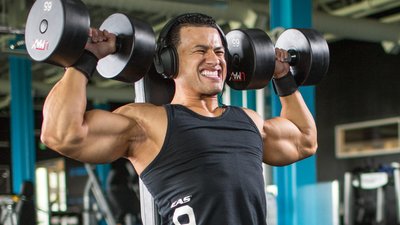"It's not the heat, it's the humidity." Well, actually, it's likely both that are sapping your energy lately, turning your workouts into a sweaty, miserable slog. You may feel your opportunity to build your best-ever body this season—as you swore you would back when we were counting down the days to summer—melting away in the process.
Fortunately, it's not too late to turn your workouts around and get results you can show off before the season's gone. With the help of EAS athlete Steven Lopez, an active-duty Coast Guardsman, we've devised 10 ways (plus a bonus tip) to beat the backslide and recharge your flagging training plan, starting now.
1. Take Advantage of Your "Hidden" Strength Reserves
"Not everyone realizes it, but most individuals are 20-30 percent stronger during the eccentric [lowering] part of the lift," Lopez says. That means you can tap into that additional power by training eccentrics specifically.
Action: Lopez suggests training eccentrics on the last set of a core multijoint move, like the bench press, machine press, or leg press. "You'll recruit fast-twitch muscle fibers best with anywhere from 95-110 percent of your max," he says. "Have a partner help you through the positive portion of each rep, then he or she should stay with you as you control the negative with a count as long as 5 seconds. Do 2-3 reps, but don't try to push it further than that. If you do it right, you won't need to."
2. Go Heavy and High Rep
In the typical pyramid, you drop the reps after warm-ups as you increase the weight set to set. So it may seem crazy to suggest that you should try to do 12-15 reps with the same weight you're now getting 8 or so reps with. But you can do it with the help of a powerful intensity technique called "rest-pause." Rest-pause takes advantage of the quickly recharging phosphagen energy system in the body, which can partially recover from depletion in a matter of seconds. Ultimately, it allows you to do more heavy reps with a given load, putting greater stimulus on the target muscle.
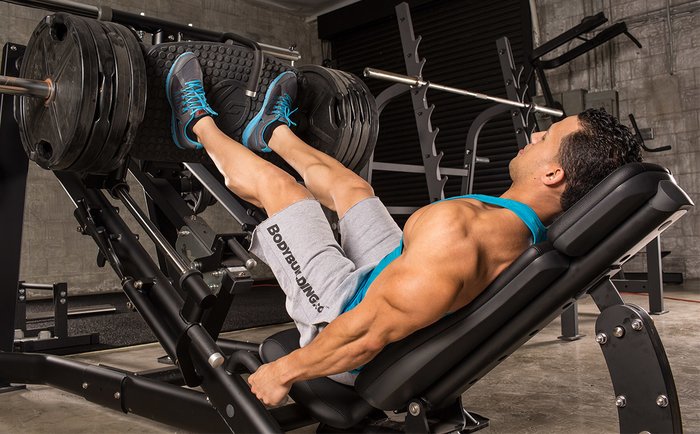
Rest-pause will allow you to do twice as many reps.
Action: To use rest-pause on your last set, load the usual amount of weight you handle for 6-8 reps. Perform 3-4 reps before resting 10-15 seconds. Repeat three more times to hit a total of 12-16 reps. Try rest-pause on one set in each of your body-part programs for the next week, and continue to pepper it into your routines for the rest of the summer.
It should be noted that, if you’re not already taking a quality pre-workout supplement, you should consider adding one to your supplement arsenal—especially when attempting high-intensity training techniques like rest-pause. A good pre-workout will help boost your energy and deliver performance nutrients like creatine and beta-alanine so you can get the most work out of each and every workout.
3. Get a (New) Grip
A barbell curl is a barbell curl, right? Well, yes—and no. While doing a curl will work the biceps, changing your grip slightly alters the stimulus, meaning the muscle fibers are engaged a bit differently than the standard palms-up, shoulder-width style. Turning your palms downward brings the forearms more into play and develops the tie-in between the upper and lower arms. A wider underhand grip 3-6 inches outside shoulder width better targets the short head of the biceps, while a narrow grip inside shoulder width puts more emphasis on the long head, which forms the peak on your arm. That's just an example; grip alterations make a difference on any exercise you do by slightly altering the muscle recruitment.
Action: If your routine has grown stale, consider changing up every grip—some in a minor way, some radically—throughout your next upper-body workout.
4. Play the Angles
Just as grips make a huge difference in how an exercise impacts the target muscle, so does your angle. The easiest example, of course, is the adjustable bench for presses or flyes—an inclined bench better targets the upper pecs, flat the middle region, and a decline angle the lower pecs.
However, that's not the only body part where angles matter. Think about all your movements and the angles involved. Single-joint raises are most often done standing, to the side or to the front, but there are many options. Cable cross-overs can be done from any pulley position. A preacher curl can be done off the steeper or moderately inclined side of the bench. For the legs, lunges can be done forward, backward, to the sides—or any point in between. All such minor changes allow slightly different muscle-recruitment patterns, allowing you to hit a muscle more completely.
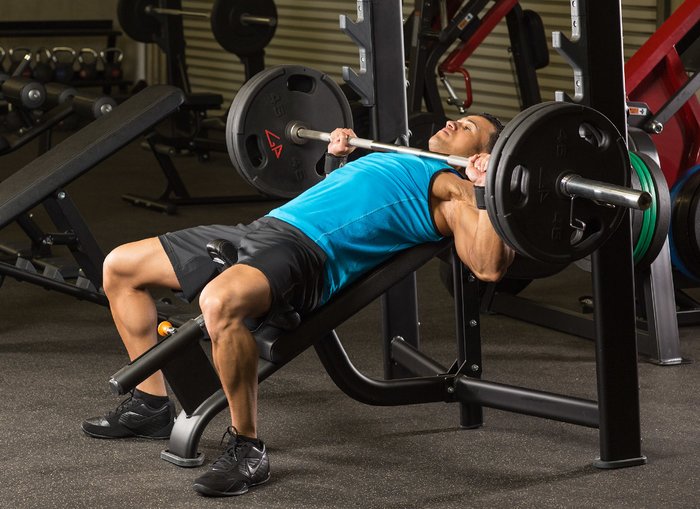
If you start every chest workout on the flat bench, opt for the incline occasionally instead.
Action: Introduce new angles to exercises in your own workout, but not all the time. Especially as you approach a training plateau, make adjustments to vary the angles in your workout.
5. Make a Unilateral Change
For nearly every exercise that requires two arms or two legs, there is a single-limbed alternative. That could be a single-leg extension, or a single-arm dumbbell chest press or cable pull-down. Unilateral exercises help promote muscular balance by not allowing a stronger limb or side of your body to take over for a weaker one.
Action: Trade in some of your two-limbed movements for the unilateral variation. To get more extreme, you can even go so far as to switch all your applicable bilateral moves in your current workout for single-limbed exercises for at least a week. You'll be skipping barbells during this time.
6. Speed Up, Slow Down
It's not only about how many reps you do, it's how you do them that also matters. While the "traditional" rep is about two seconds up, a one-second peak contraction, and two seconds down, that's not the only way to get optimal results.
Explosive reps—where you push as hard and as fast as you can through the positive portion of each rep while maintaining control—can train the fast-twitch muscle fibers in different ways. In addition, a super-slow rep tempo, where you take from 5-10 seconds to complete the upward and downward phases of a rep, can challenge you in a completely different way, eliminating any momentum that might help you to complete the lift.
Action: Manipulate your rep speeds, adding explosive reps on some heavier compound exercises while trying super-slow reps for an exercise or two in the middle to latter portion of your workout.
7. HIIT Your Fat Stores
If staying lean is your goal this summer, don't ditch the cardio just yet. However, you can definitely make your sessions shorter and more efficient. Lopez recommends high-intensity interval cardio 2-3 times per week.
Action: "These can be outdoor wind sprints, or you can do them on a treadmill or elliptical trainer if that's your best option," Lopez explains. "After a warm-up of at least 5 minutes of a lower-intensity walk and jog, go full-intensity for 30-45 seconds, and then recover for up to 2 minutes—that cycle would be one interval. Do this for just 5-6 intervals and you can help take your fat loss to the next level, especially if you've never really tried HIIT before."
8. Focus Your Efforts
The ripped, muscled physique you want may be vivid in your mind, but it's very difficult to train for multiple goals simultaneously. Instead, prioritize one or another. For the rest of this summer, pick just one physique goal and put 100 percent effort into achieving it. That can apply to building up a single body part, too.
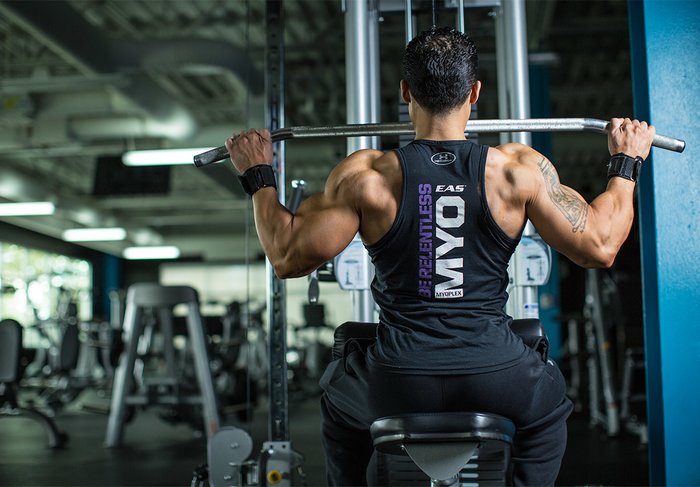
If you want to bring up your back, focus on lat-building strategies rather than trying to do everything at once.
Action: Let's say your goal is to get a wider back. First off, train it by itself at the top of your split—Mondays, for instance, with Sunday as a rest day. Add a second back day later in the week, perhaps Thursday. You can even pepper back movements into other training sessions: Pull-ups could be used in a warm-up sequence, or you can do a few sets of pull-downs or rows at the beginning or end of another body-part workout. Watch out for the signs of overtraining, but if you do this short term, you should be all right.
9. Seek Expert Guidance
You know why so many people do deadlifts wrong? Because they never learned to do them correctly! Trainers aren't just for newbies and executives; even top pro bodybuilders have coaches, and many competitive powerlifters use strength coaches. So why not get a certified professional on your team, at least for a while.
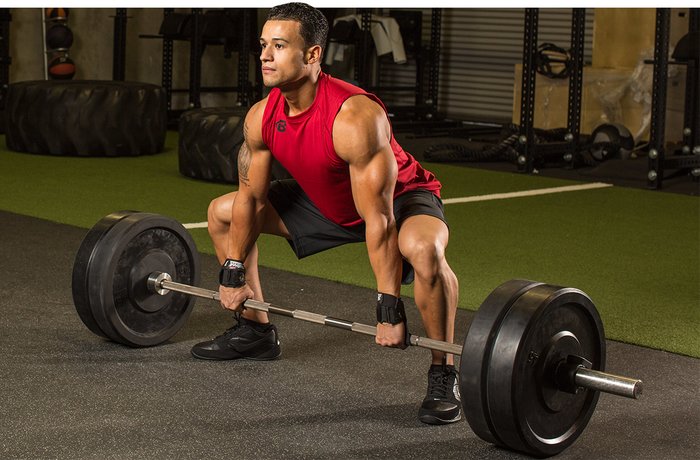
Get coached by the best you can find to maximize performance and reduce the risk of injury on complex moves.
Going in open-minded can give you all sorts of ideas on new ways to train, and a fresh pair of eyes will more than likely notice bad habits that have creeped into your form. Longer term, a personal trainer can provide just the motivation needed if you've got a particular goal in mind, whether it be a race or a physique contest. And, if you have any issues with consistency, knowing you're paying someone who is waiting for you provides a lot of motivation to get to the gym and not miss workouts.
Action: Identify a seasoned and respected personal trainer for at least one session to see how well you match. If you're good with him or her, invest in a month's worth of sessions to not only lock down your exercise technique but also try new programs (many of which you can find here on Bodybuilding.com).
10. Ditch the Gym
Imagine if you showed up at your favorite health club tomorrow—the one you've been frequenting for years—and it was shuttered. Doors locked, equipment loaded onto a truck, a "For Rent" sign in the window. All of a sudden, you need to figure out how to get today's workout done. What would you do? Take it outside and improvise, that's what.
On occasion, try putting together a routine of bodyweight moves, plyometrics, and cardio that will take your training outdoors and allow you to break a serious sweat. If that's too much, consider even checking out another gym on a day pass, where a new environment may help you invigorate your approach as you find your way around new equipment, new floor setups, and new people who might inspire you to try something different.

Action: Each week, do at least one outdoor workout, or head to a different gym in your city. And don't be afraid to venture well outside the box, either, trying out a CrossFit or mixed-martial arts gym.
Bonus Tip For Emergency Use Only: Do a "Spring Cleaning" This Summer
It might seem crazy to throw out your whole program—every workout, set, and rep scheme you've been doing religiously for months, perhaps years. Yet, such a spring cleaning may be exactly what you need to make a fresh start again. The bigger problem: We tend to get comfortable in what we do, and habits are hard to break.
Yet, the human body is a machine that can adapt to nearly any challenge you toss its way. Workouts that were hard and elicited gains in the first few months can soon become stale. Muscles grow accustomed to the overload, and positive physique changes stall. A completely new mode of attack can be just the shock mechanism you need to see the same sort of drastic improvements you made way back when you were just a beginner.
Action: Find a new program that's materially different from what you've done in the past, such as one geared for strength training. Work on it aggressively to bring your strength to a whole 'nother level.

